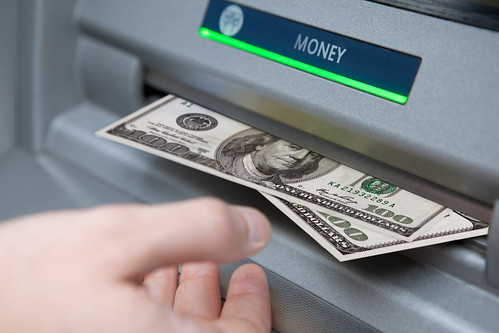
Good morning Dinks. Today we are discussing our investment portfolios and our investment strategies. After the market crash in 2008 it seems like everyone is talking about the market and even more people are afraid of the market. Let me ask you a question – how is your investment portfolio doing? Did you receive your recent quarterly statement? Do you like how your portfolio looks?
Maybe your investment portfolio is conservative, meaning it’s slow and steady. Maybe your investment portfolio is experiencing massive ups and downs because you are a high risk investor. Or maybe you are more of a saver than an investor – maybe you have all of your money in cash or near-cash investments.
What is cash investing?
Investing in cash means that you have your money in a safe place such as a high interest savings account, a t-bill or a money market mutual fund. Cash and near cash investments are highly liquid investments that give you access to your money on short notice in case of an emergency.
Near cash investments are easy to access and they are also considered to be very low risk investments – all of that sounds great right? But there is a catch, the downside to investing in cash and near cash investments is that they don’t pay a lot of interest. Your money will definitely not grow in near cash investments, but at the same time you won’t lose money either because they have little to no daily fluctuations.
The pros of investing in cash
Maybe you invest in near cash investments such as t-bills, savings accounts and money market instruments because you like to always have access to your money, even on short notice. Putting your money into a money market fund or a high interest savings account is a great way to keep your money safe if you are keeping some cash on hand for an emergency or a short term goal.
Sometimes we just never know what life is going to hand us and that’s why it’s a good idea to keep some money in a cash or near cash account, just in case of an emergency.
The cons of investing in cash
Long term investors don’t like cash and near cash investments because they don’t help portfolios grow. Long term investors should be kept 5% to 10% of their portfolio in cash or near cash investments just in case they need to buy or sell in case of an emergency.
Keeping more than 10% in cash and near cash investments is not beneficial to long term investors because they do not have the opportunity to grow over time. Cash and near cash investments offer security and flexibility in exchange for a low interest rate.
However, some people would disagree with me. Some people like to keep all of their money in cash or near cash investments – even for the long term – because they feel that security of their capital investment and a little bit of interest is better than losing your money and having no rate of return.
What do you think? Do you have cash and near cash investments in your investment portfolio?
Photo by taxcredits



High interest savings account…what is this witchcraft you speak of?!
I love my high yield savings account!!
Matt Lovelady is an owner in Syncis, and he is a dishonest person. He lies, cheats and steals. If your thinking of doing business with him, I strenuously advise you to think again. He’s a crook.
@Cat – I have more clients putting their money in high interest savings accounts than into money market and tbills. People prefer the flexibility of high interest savings accounts. I agree, it’s always good to have some cash on hand. We don’t earn a lot, but at least we always have access to our money if we need it.
Pingback:Investing as a couple means that you have to be total opposites. | DINKS Finance